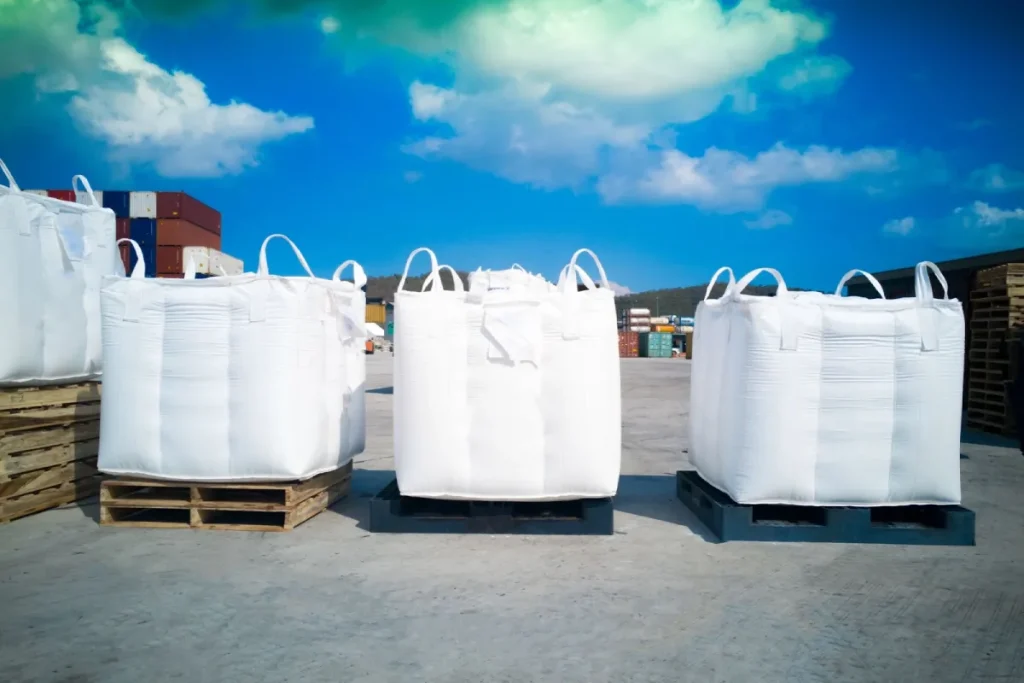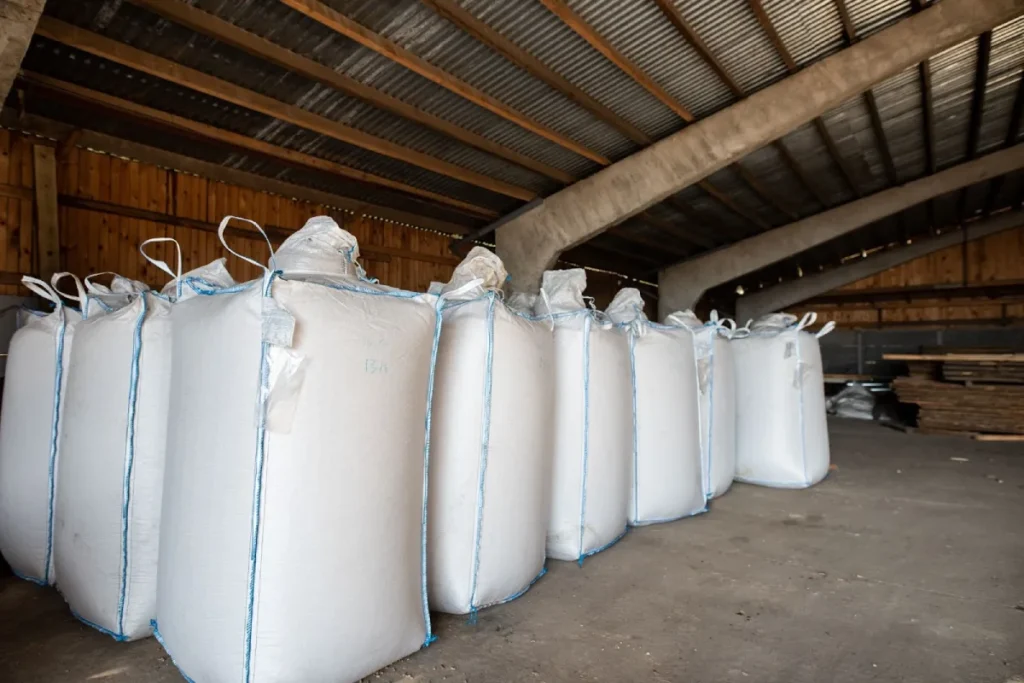
Types of closures for bags refer to the different ways an FIBC (Flexible Intermediate Bulk Container) or bulk bag is sealed and emptied. The closure determines how securely materials are stored and how efficiently they can be discharged. Choosing the right bottom design is crucial for preventing spillage, contamination, or material loss.

Explore all closure types—spout, flat, petal, and conical—to perfectly match your material handling and discharge needs.
Explore All FIBC SolutionsThis guide explains the main FIBC types of closures, from flat bottoms to spout and petal closures, to help you choose the right design for your packaging needs. Whether you handle powders, grains, or construction materials, understanding these closures ensures safety, efficiency, and cost-effectiveness. For a general overview of your core packaging options, explore our dedicated page on حقيبة فيبك الكبيرة solutions.

A Flat Bottom FIBC is the most basic design used in bulk packaging. It features a sealed base with no outlet or discharge opening. To empty the contents, the bag must be manually cut open or tilted.
الأفضل لـ: One-time use and non-reusable bags where contents are disposed of all at once — such as sand, gravel, or solid construction waste.
المميزات:
While it lacks reusability, the flat bottom remains a popular choice due to its simplicity and strength.
The Spout Bottom FIBC is one of the most common types of closures for bags used for powders and granules. It features a cylindrical spout sewn into the base of the bag, which acts like a funnel for controlled discharge.
Benefits:
The spout can be tied or sealed with a cord when not in use, ensuring the materials stay protected from moisture and contamination.
Related: Learn more about Spout Bottom vs. Flat Bottom Bulk Bags to understand which design fits your operation.

When handling fine or hazardous materials, a Spout Bottom with Iris Closure provides extra control. An iris closure acts as a secondary sleeve that wraps around the discharge spout. It can be tightened or loosened using a drawstring mechanism, controlling the flow of material precisely. This level of dust control is crucial, as further detailed in our guide: حلول التحكم في الغبار: دليل لتفريغ الأكياس وتعبئتها.
Ideal for: Chemical powders, fertilizers, and other fine particulate substances.
Why it matters:
This closure type is often recommended in industries that require strict environmental and safety compliance.
The Petal Closure FIBC, sometimes called a Star Closure, includes overlapping fabric flaps (petals) sewn beneath the discharge spout. These petals fold inward, covering the spout when not in use.
المميزات الرئيسية:
This design is especially beneficial for long-term storage or transportation of sensitive materials. The Petal Closure FIBC combines safety with longevity, helping manufacturers reduce replacement costs and material loss.
A Protection Flap adds an external fabric cover over the discharge area, shielding the spout and seams from damage during transit.
Why it’s used:
This design is common in logistics and export packaging, where FIBCs are handled multiple times before reaching their destination. If you need maximum durability for frequent trips, consider the benefits discussed in Single Trip Bulk Bags vs. Multi-Use Bulk Bags.
Some products, such as clay, slurries, or wet grains, don’t flow freely. The Conical Base Bottom FIBC solves this problem with a cone-shaped bottom that naturally guides material out through gravity.
Benefits:
This design ensures efficient unloading and is ideal for industries dealing with viscous or dense materials.
A B-Lock Closure, also known as a cord lock, replaces hand-tied knots with a secure locking mechanism. This helps operators open and close the discharge spout quickly and safely.
المميزات:
This system improves convenience and enhances safety, making it a popular feature in modern FIBC production. For handling corrosive materials that demand maximum security, you should use FIBCs designed for أهم فوائد استخدام أكياس FIBC السائبة للمواد الكيميائية.
Selecting the right closure affects just how you fill and empty your bags but also how well your materials are protected and how your operations perform. Our product line of حقيبة فيلم بي liners can be integrated to enhance protection regardless of the closure type.
Key considerations:
Understanding these FIBC types of closures helps you optimize both cost and safety across your packaging cycle.
Understanding the types of closures for bags helps you select packaging that aligns with your material, safety, and handling requirements. From flat bottom to Petal Closure FIBC, each design serves a specific function — improving efficiency, reducing waste, and enhancing overall safety.
At XIFA Group, we specialize in high-quality FIBC big bags, PP woven bags, BOPP bags, and PE film bags designed for modern industries. Explore our complete collection and find the closure design that fits your business best. Start your packaging project today, your trusted partner for durable, customizable bulk packaging solutions.
1.What is the most common type of bag closure?
The spout bottom is the most widely used closure because it allows controlled discharge and minimal spillage.
2.Which FIBC bottom design is best for sticky materials?
A conical base bottom or quick-discharge design works best for sticky or dense products.
3.How can I prevent dust when discharging bulk bags?
Using an iris closure or petal closure FIBC minimizes dust and keeps materials contained.




